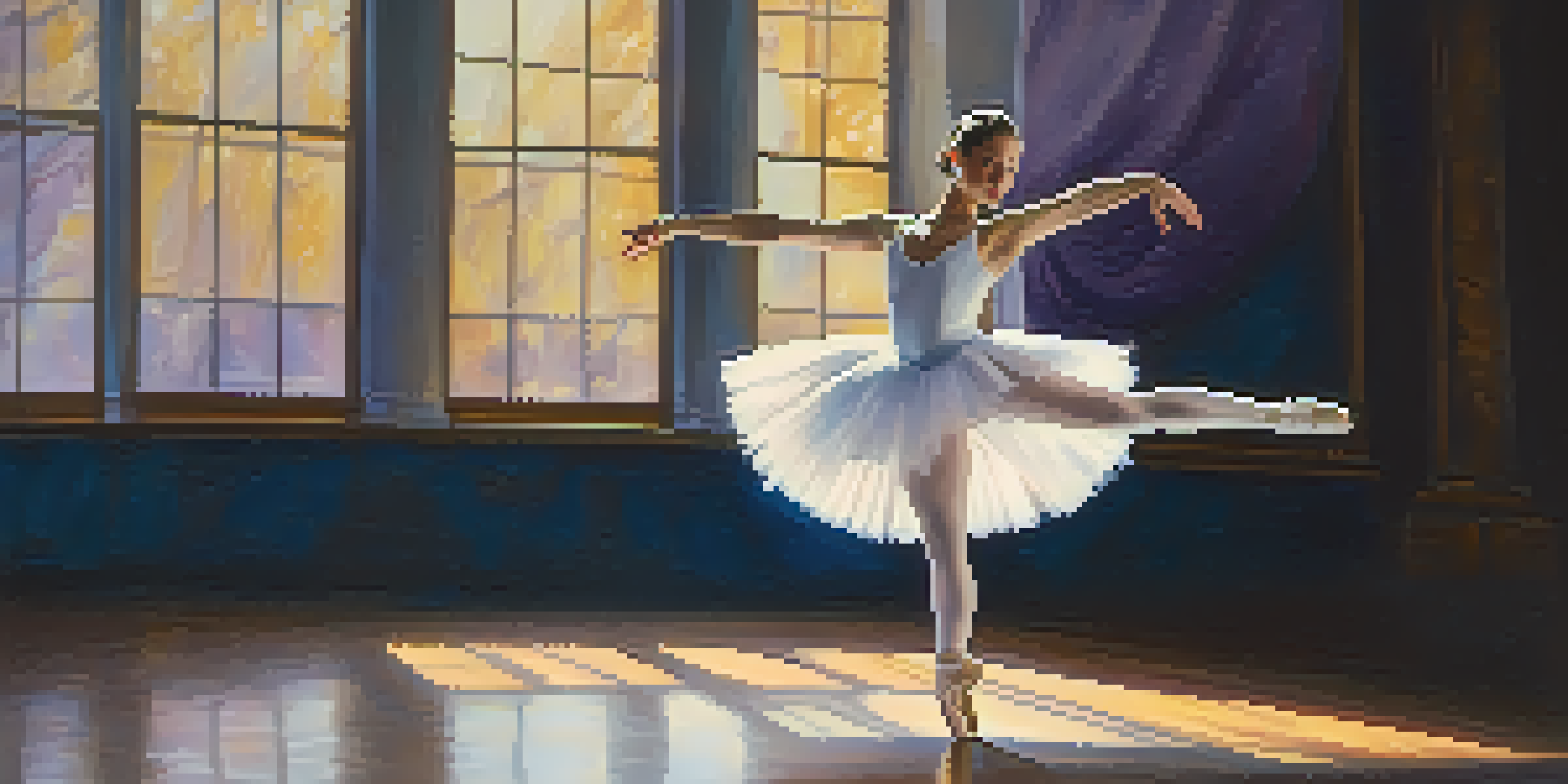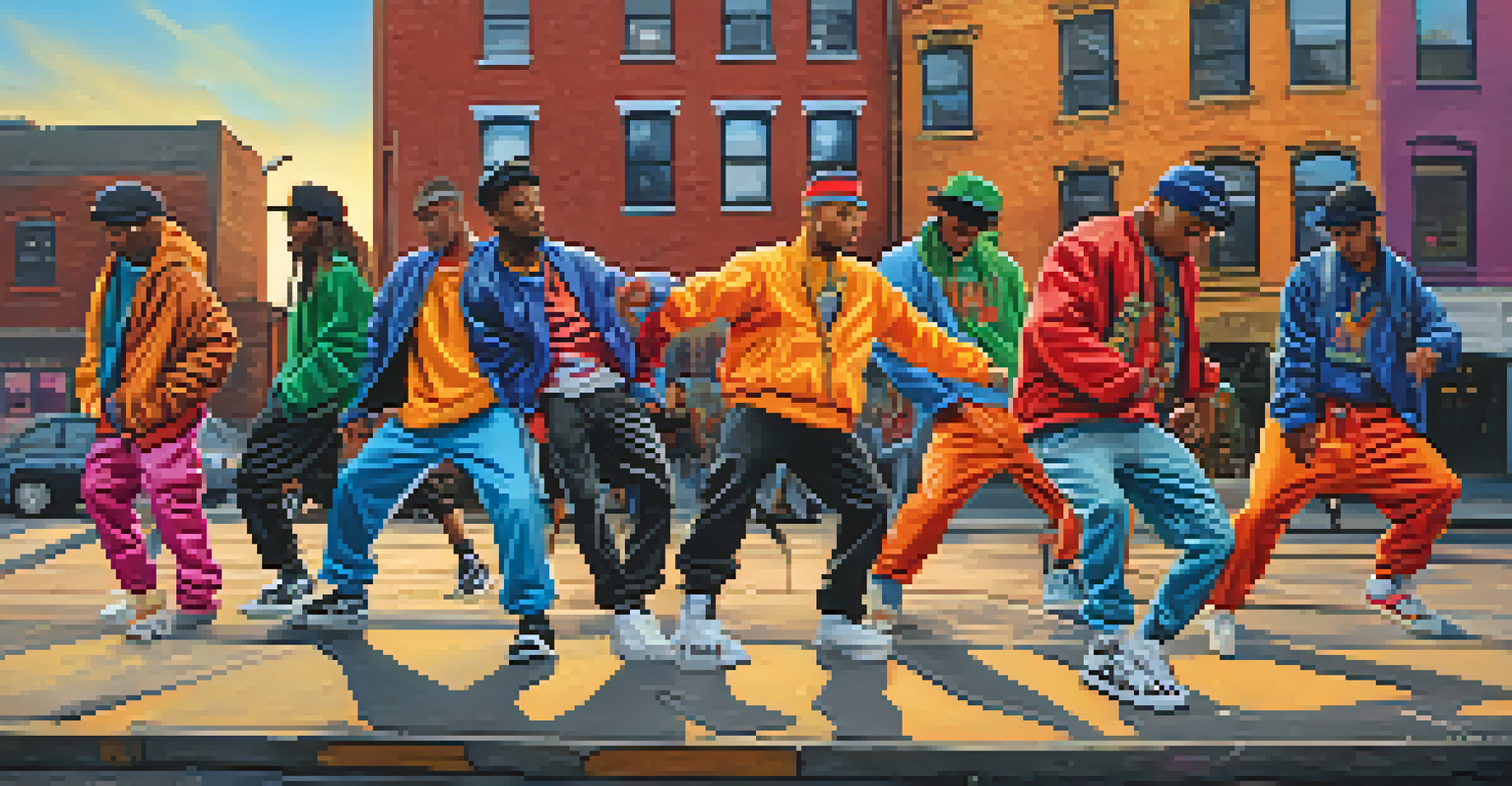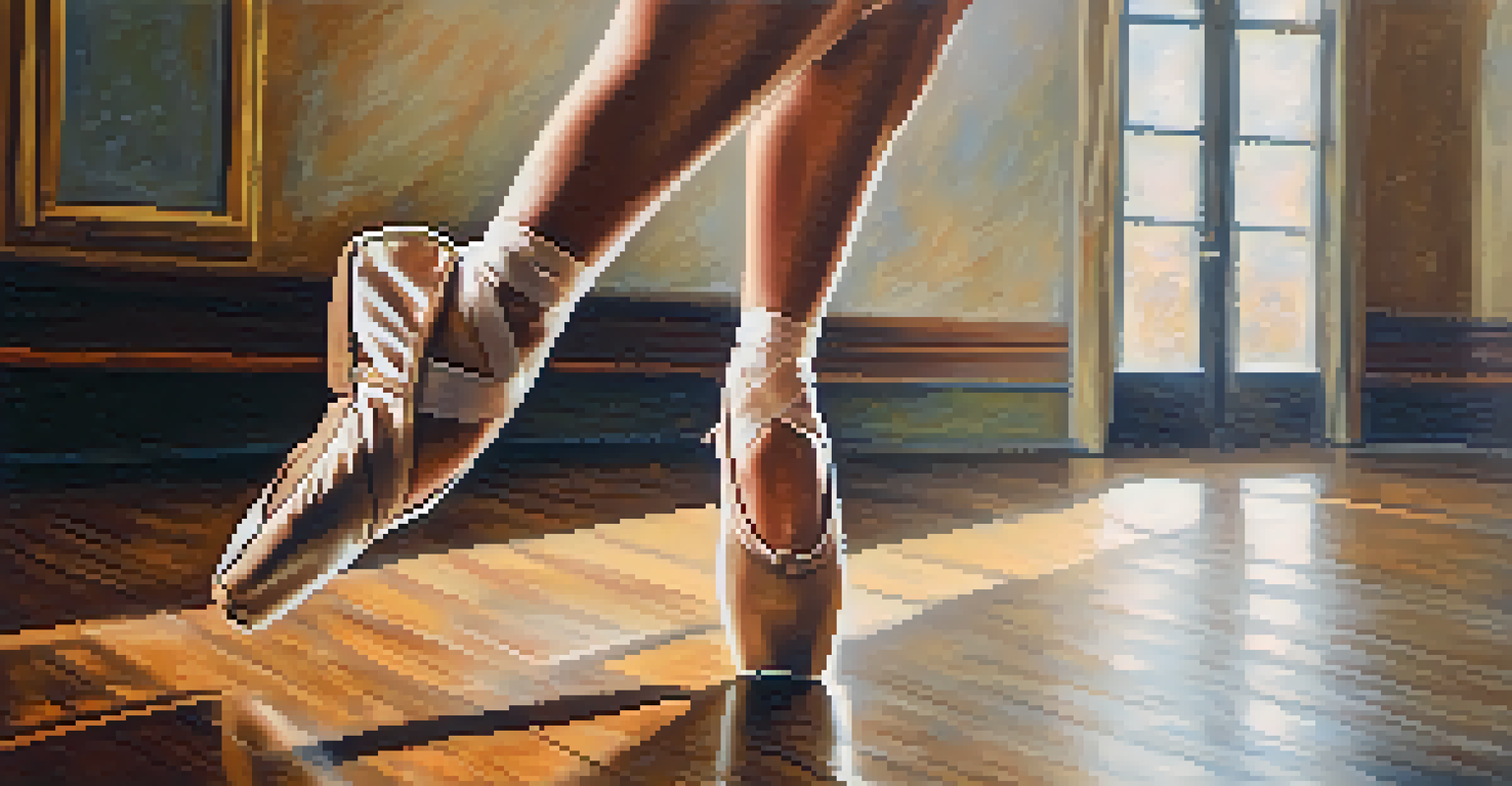The Role of Rhythm in Dance Techniques: Timing and Precision

The Foundation of Rhythm in Dance Techniques
Rhythm serves as the heartbeat of dance, guiding each movement and step. It establishes a pattern that dancers follow, making their performance cohesive and dynamic. Just like music has its own tempo, dance relies on rhythm to convey emotions and tell a story.
Dance is the hidden language of the soul.
Without rhythm, dance can feel disjointed, losing the expressive quality that makes it captivating. Think of rhythm as a roadmap; it helps dancers navigate through their choreography with grace and confidence. When executed correctly, rhythm can transform a simple movement into a breathtaking display of artistry.
Moreover, rhythm allows dancers to connect with their audience on a deeper level. It creates a shared experience, drawing viewers into the performance. This connection is vital, as it enhances the emotional impact of the dance, leaving a lasting impression.
Timing: The Key to Synchronization in Dance
Timing is crucial in dance, determining when each movement should occur within the rhythmic structure. A dancer's ability to stay in sync with the music and fellow performers can make or break a routine. Imagine a group of dancers moving in perfect harmony; their timing creates an almost magical experience for the audience.

Good timing not only enhances visual appeal but also ensures that the choreography flows seamlessly. It requires practice and attention to detail, as dancers must train their bodies to react instinctively to the music. When timing aligns with rhythm, it elevates the overall performance, leaving spectators mesmerized.
Rhythm Guides Dance Movements
Rhythm serves as the heartbeat of dance, providing a cohesive structure that enhances expression and storytelling.
In genres like ballet or hip-hop, precise timing is essential to executing complex movements. Dancers must anticipate beats, ensuring they hit their marks exactly when needed. This precision allows for innovative choreography that pushes the boundaries of creativity, showcasing the dancers' skills.
The Precision of Movement: Aligning Body and Rhythm
Precision in dance refers to the accuracy of each movement, making sure that every gesture is deliberate and controlled. When dancers align their movements with the rhythm, they create a visually stunning effect that captivates audiences. This precision is not just about aesthetics; it also ensures that the choreography is performed correctly.
Rhythm is the heartbeat of life, and in dance, it becomes the pulse of expression.
To achieve this level of precision, dancers must develop a keen sense of body awareness. They need to know how their body moves in relation to the music and their surroundings. This awareness allows them to execute intricate steps with confidence, making even the most challenging routines look effortless.
Moreover, precision can enhance the storytelling aspect of dance. When movements are executed with clarity and accuracy, the narrative becomes more engaging. Dancers can convey emotions more effectively, allowing the audience to connect with the story on a personal level.
The Interplay Between Rhythm and Expression in Dance
Rhythm and expression work hand in hand in dance, with each influencing the other. While rhythm provides the structure, expression adds depth and personality to the performance. Dancers often interpret the rhythm through their emotional lens, creating a unique experience for viewers.
For instance, a fast-paced rhythm may evoke joy and excitement, prompting dancers to express that energy through lively movements. Conversely, a slower rhythm might inspire more fluid, emotive gestures. This interplay allows for a rich tapestry of emotions that keeps audiences engaged and invested.
Timing Ensures Dance Synchronization
Precise timing is essential for dancers to stay in sync with music and each other, elevating the overall performance.
Additionally, improvisation often arises from this relationship. Dancers may feel compelled to deviate from the choreography to express how the rhythm resonates with them personally. This spontaneity can lead to memorable moments that highlight the dancer's individuality, making the performance truly special.
Building Rhythm and Timing Skills Through Practice
Developing rhythm and timing skills takes consistent practice and dedication. Dancers often engage in exercises designed to enhance their sense of timing, such as clapping or tapping to a beat. These activities help internalize the rhythm, allowing dancers to sync their movements more effectively.
Joining classes focused on rhythm and timing can also be beneficial. Instructors often incorporate drills that emphasize musicality, encouraging dancers to listen deeply to the music and respond accordingly. This not only sharpens their skills but also fosters a deeper appreciation for the art of dance.
Moreover, practicing with different music genres can expand a dancer's versatility. Each style has its own unique rhythm, and exploring these variations can enhance a dancer's adaptability. This broadened skill set allows for more creative interpretations, ultimately enriching their dance repertoire.
The Role of Technology in Enhancing Rhythm and Timing
In today’s digital age, technology plays a significant role in helping dancers refine their rhythm and timing. Various apps and software are available that allow dancers to practice with metronomes or rhythm tracks, providing a structured way to develop their skills. These tools can make practice sessions more engaging and effective.
Additionally, video recording can offer invaluable feedback. Dancers can analyze their performances, identifying areas where their timing may be off or where their movements lack precision. This self-assessment encourages growth and improvement, allowing dancers to make adjustments before hitting the stage.
Practice Builds Rhythm Skills
Consistent practice and exposure to various music genres help dancers develop their rhythm and timing abilities.
Social media platforms have also transformed how dancers connect and learn. By sharing performances, dancers can receive instant feedback from peers and instructors. This collaborative environment fosters a sense of community, motivating dancers to push their boundaries and explore new rhythmic techniques.
The Lasting Impact of Rhythm in Dance Performance
The impact of rhythm in dance extends beyond the performance itself; it resonates with audiences long after the curtain falls. A well-executed routine, where rhythm and precision align, can leave a lasting impression, inspiring viewers and fellow dancers alike. It's the kind of performance that lingers in your mind, replaying in your thoughts.
Moreover, rhythm can bridge cultural divides, connecting people through the universal language of dance. Different cultures express rhythm in unique ways, and these variations enrich the global dance community. By embracing diverse rhythms, dancers can broaden their perspectives and enhance their artistry.

Ultimately, the role of rhythm in dance techniques is profound. It shapes not only how dancers perform but also how they connect with their audience and express themselves. This intricate dance of timing and precision is what makes the art form so captivating, ensuring that rhythm will always be a vital component of dance.